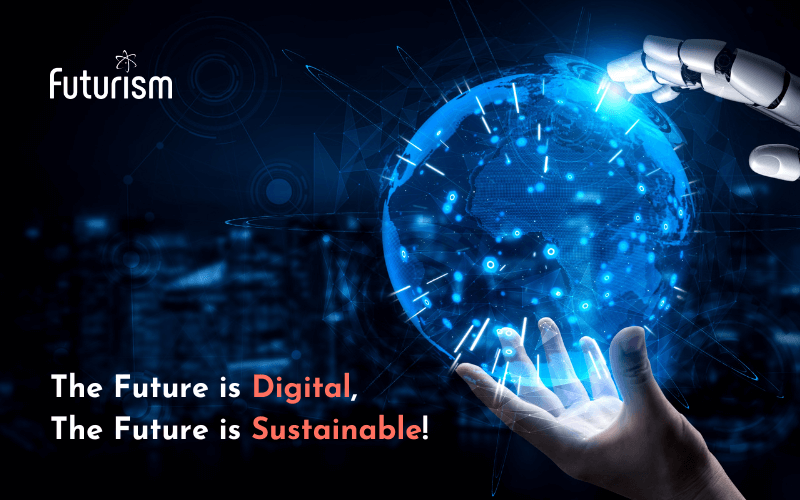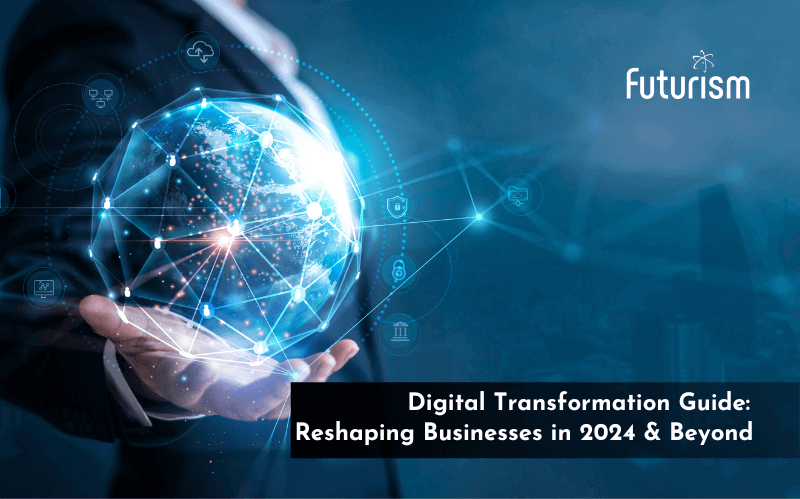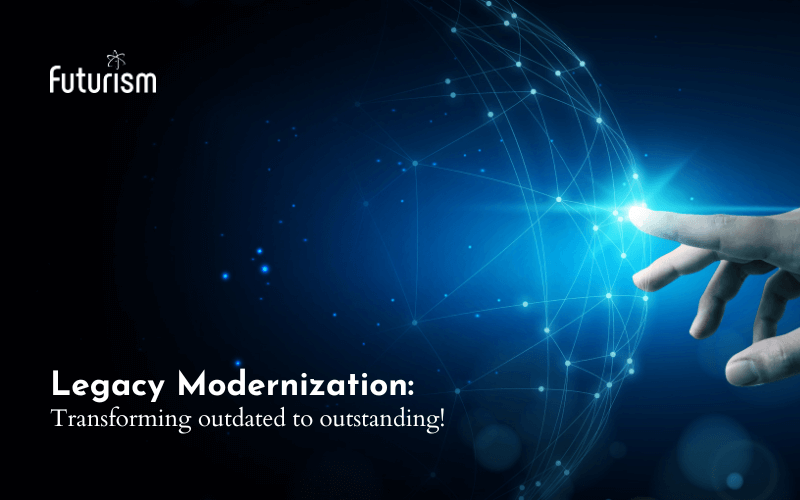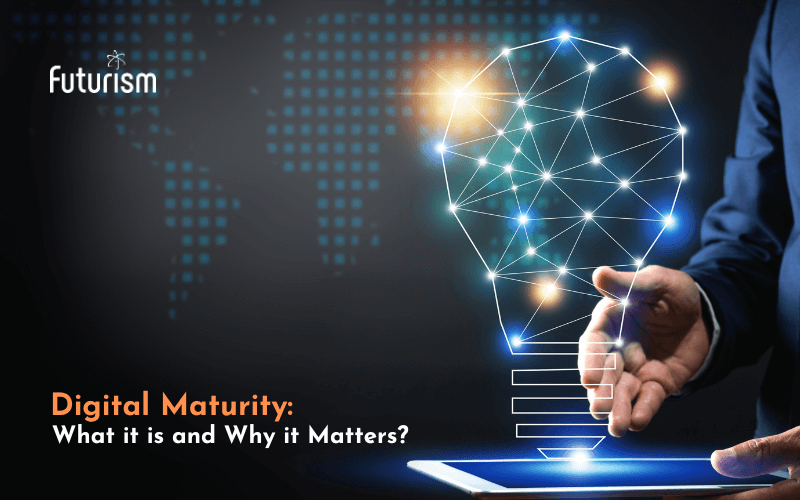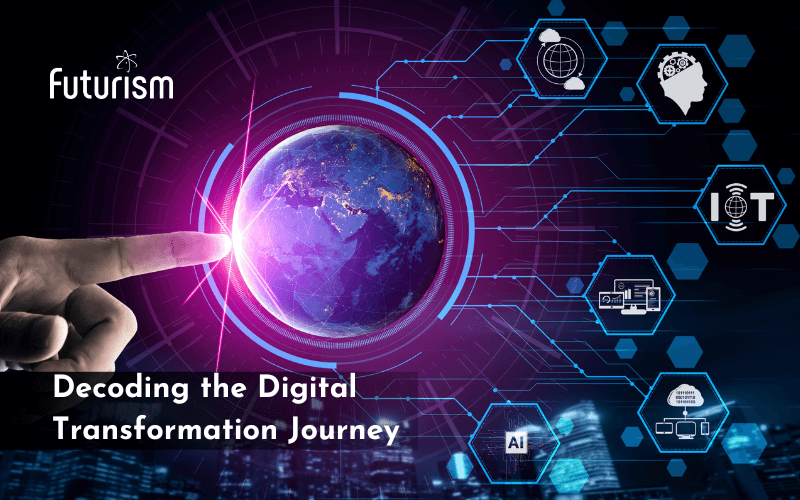The Meaning and Importance of Digital Transformation

Futurism Technologies
November 6, 2019 - 5.2K
5 Min Read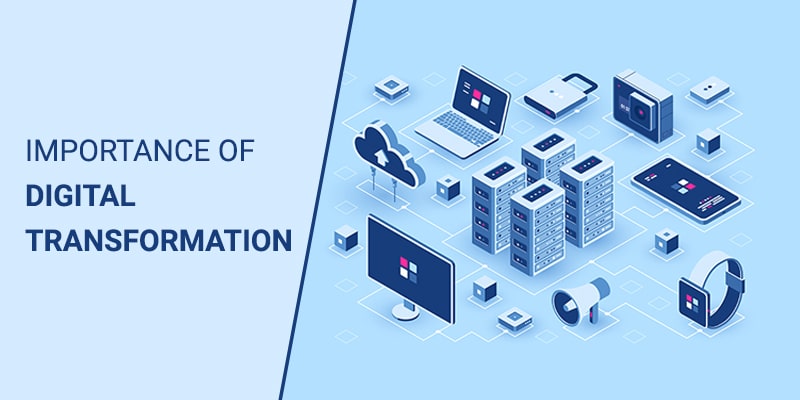
As far as the business is concerned, every era has its own buzzword. In the late 1990s, it was the internet. At the beginning of the first decade of this century, it was social media. Now, it’s digital transformation. The gigantic importance that it has achieved can be gauged when John Chambers, former Executive Chairman of Cisco System, says, “At least 40% of all businesses will die in the next 10 years if they don’t figure out how to change their entire company to accommodate new technologies.” Clearly, digital transformation is critical to the survival of businesses – not just because of the vitality that it gives to an organization by upping its operational efficiency, but due to its ability to let an organization act proactively by taking the right decision as well.
But despite such resounding affirmation from the leading lights of the market, only 34% of companies have undergone a digital transformation. Before going into the depth of the reasons behind it and the benefits of digital transformation, it’s important to have a detailed idea of the term digital transformation.
What is Digital Transformation?
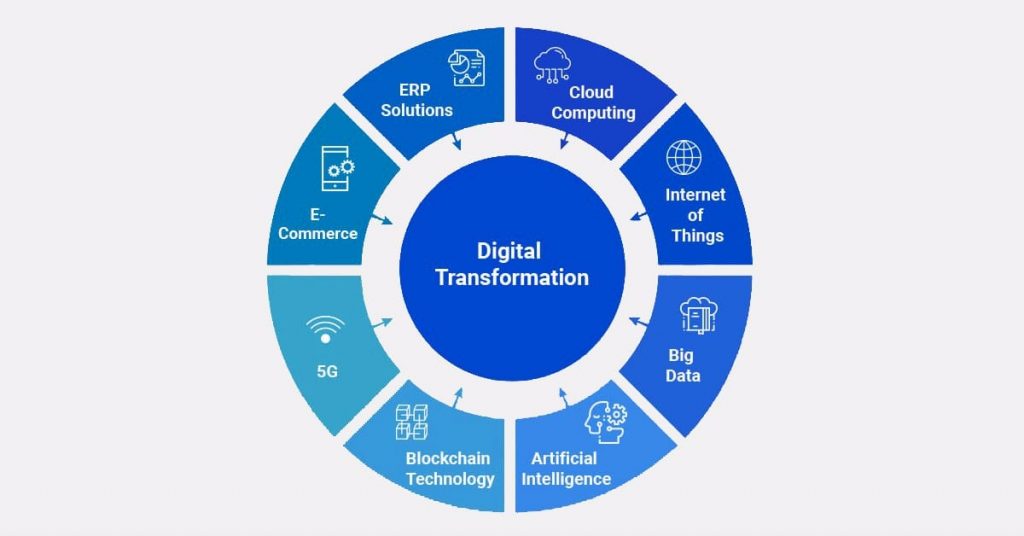
Digital Transformation is the process of digitally bringing organizational changes in all possible business operations. Basically, it’s a way of changing how you function and deliver value to customers. It can be considered as a cultural change that obliges organizations to challenge the status quo and experiment repeatedly.
In short, digital transformation demands an examination and reinvention of most, if not all, areas within an organization, from its supply chain and workflow, to its employee skill sets and order management, to its customer interactions and its value to stakeholders. As it deals primarily with people, it commences with empowering the employees with first-hand tools and methodologies to create data-driven strategies and innovation.

Through AI and IoT, digital transformation connects everyone and everything in the global network. Naturally, it smoothens the data flow over broadband technology, which makes it even more accessible.
How a Digital Transformation Framework Looks Like
Though digital transformation may look different to different organizations based upon their needs, certain constants remain in every digital marketing framework. Some of them are-
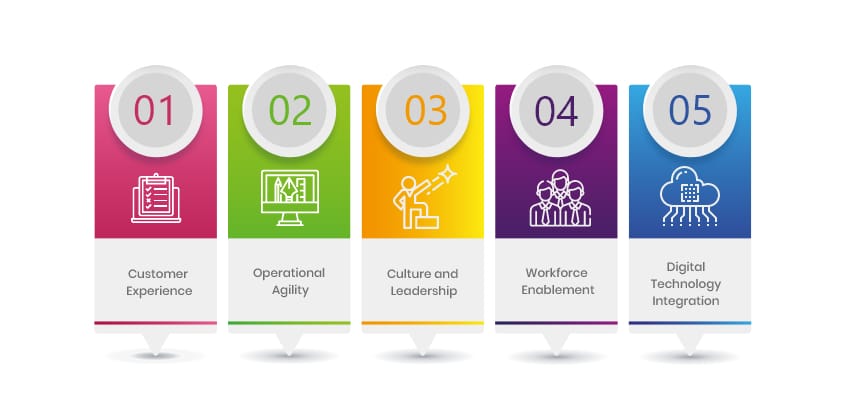
As each framework will have its own priority and considerations, CIOs should be extremely careful while developing their own digital transformation strategy. As a reference point, you can look at MIT Sloan’s guide of The Nine Elements of Digital Transformation.
Importance of Digital Transformation
Note that digital speed is as much as 5 times faster than a traditional business. Even if you wish to become a fast follower, if not the leader, then also pace is essential. Naturally, digital transformation will bring success to you largely because of its speed and accuracy – especially when digital disruptors are snapping at the heels of many businesses. Let’s explore the incredible benefits that digital transformation will bequeath on business and its workforce.
A) Renewed Customer Experience:

In an era of too-much-similar-products, differentiating solely on prime offerings is difficult. That’s why customer experience alone has emerged as the new battleground for achieving a definite differentiation. In fact, customers look at it as the main criterion while making a buying decision. Stats such as 86% of buyers will pay more for a better brand experience prove it unequivocally.
Digitalization can give a swift boost to the enhancement of customer experience. Through omnichannel strategy, companies can maintain a cohesive and real-time communication with the customers. AI-powered chatbots can resolve customer grievances in no time – helping you to create a positive vibe about your brand.
Moreover, retailers can use beacons to locate the customers accurately in the store and send the most appropriate marketing message bases upon the products that are in the isles near them. Clearly, companies at the front of the digital transformation will earn much trust and respect from customers.
B) Data-Backed Decision Making:
The simple fact is, if you cannot measure it, you cannot manage it. To ensure that all the operational functions are performing at their pick level, you need numbers to compare them with the standard benchmarks. Leveraging the power of digital enables you to track metrics and analyze the collected data during the whole effort. Based on this accurate and timely insights, businesses can optimize their strategies and processes for even superior results. Note that this can bring massive changes in two things that matter the most – costs and revenue.
Implying data-driven insights to understand customers’ behavior patterns and multi-point buying journeys enables hyper-personalization, relevancy, real-time feedback, and suppleness. This can be achieved by using both structured (personal customer information) and unstructured data (social media metrics), which can be filtered out from the large chunk of data. It can be understood in a real-life example. If you find that a particular customer purchases items on weekends, you can devise a personal message for him on similar lines. It doesn’t just improve the chances of conversions. It also helps to establish a special bond between you and your customer.
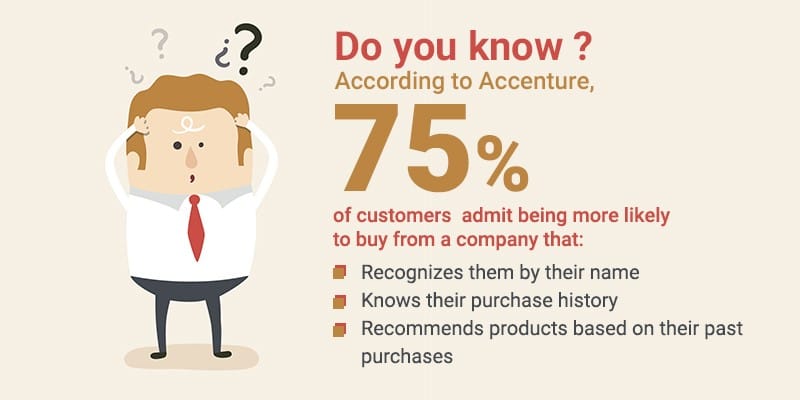
C) Easier Collaboration:

As digitalization makes it easy to access the right information at the right time, it makes the work environment less hierarchical and siloed. Enabling businesses to get rid of “us vs. them” mentality, digitalization can become a prime mover of smooth collaboration.
For example, digitalizing your lead generation efforts makes both sales and marketing more operative. A sales team can acquire a list of leads, and your marketing team can use the lead data to draw insights and make concrete decisions about the targeted audience. Similarly, technologies like CRM can track historical client data related to interactions, interests, and engagements.
D) Better Market Penetration:

The only way to penetrate the unexplored market is to add new customers. It begins with identifying the target territory and segmenting it accordingly to market the new products. Moreover, if it’s backed by sound data analysis and real-time access to demographic details, the whole process of market penetration can become hassle-free – letting you enter the market early and clinch the benefits of being a pioneer in the industry.

Subscribe Now!
TRENDING POSTS
-
Futurism Returns to Hannover Messe 2024: Leading the Charge in Industrial and Digital Transformation
-
The Role of Smart Maritime IoT Solutions in Enhancing Maritime Safety
-
Data Integration Unlocked: From Silos to Strategy for Competitive Success
-
Navigating the Shadows: Understanding Zero-Click Attacks in the Digital Age
-
AI Reimagined: Crafting Next-Gen AI Apps with Expert Fine-Tuning
-
Explore Next-Gen Digital Solutions with Futurism at MWC 2024
-
Futurism Unleashes the Technology of Tomorrow at MWC Barcelona 2024
-
Futurism AI: Turning Ideas into Apps at Lightning-Fast Speed
-
Accelerate AI Across Your Enterprise With Futurism AI
-
Futurism to Address the Biggest Security Challenges at RSS 2022
-
Futurism at SelectUSA 2022: Steering the Next Wave of Businesses
-
Futurism to Uplift the MSP Business Community at the MSP Expo 2022
-
Futurism Sets Out to Address the Biggest Security Challenges at the RSA Conference 2022
-
5 Ways to Prepare Your Business for Digital Transformation
-
4 Ways To Win at Digital Transformation on a Shoestring Budget
-
Futurism: Empowering MSPs at the Channel Partners Conference & Expo 2022
-
Why AI in Digital Marketing is the Next Big Thing?
-
Futurism brings ‘Mobile First Digital Transformation’ to the fore at MWC Barcelona 2022
-
Cybersecurity for Rural Hospitals: How can Rural Hospitals become Cyber Smart?
-
Futurism Empowers Rural Health Care Community at the AHA Rural Health Care Leadership Conference
-
The Biggest Problem With Cybersecurity In Healthcare Sector, And How IBM QRadar Can Fix It?
-
How IBM MaaS360 is Revolutionizing Endpoint Security in the Healthcare Industry?
-
Futurism to Present its MSP Partner Program at the Channel Partners Conference & Expo 2021
-
EndPoint Security in Healthcare Matters and IBM MaaS360 Can Help
-
How AI Will Enable Faster Adaptation of Digital Transformation
-
How Is Digital Modernization Important In Supplier On-Boarding?
-
Top 10 Email Marketing Tips for This Holiday Season
-
Benefits of using ERP Software for Energy and Gas Industries
